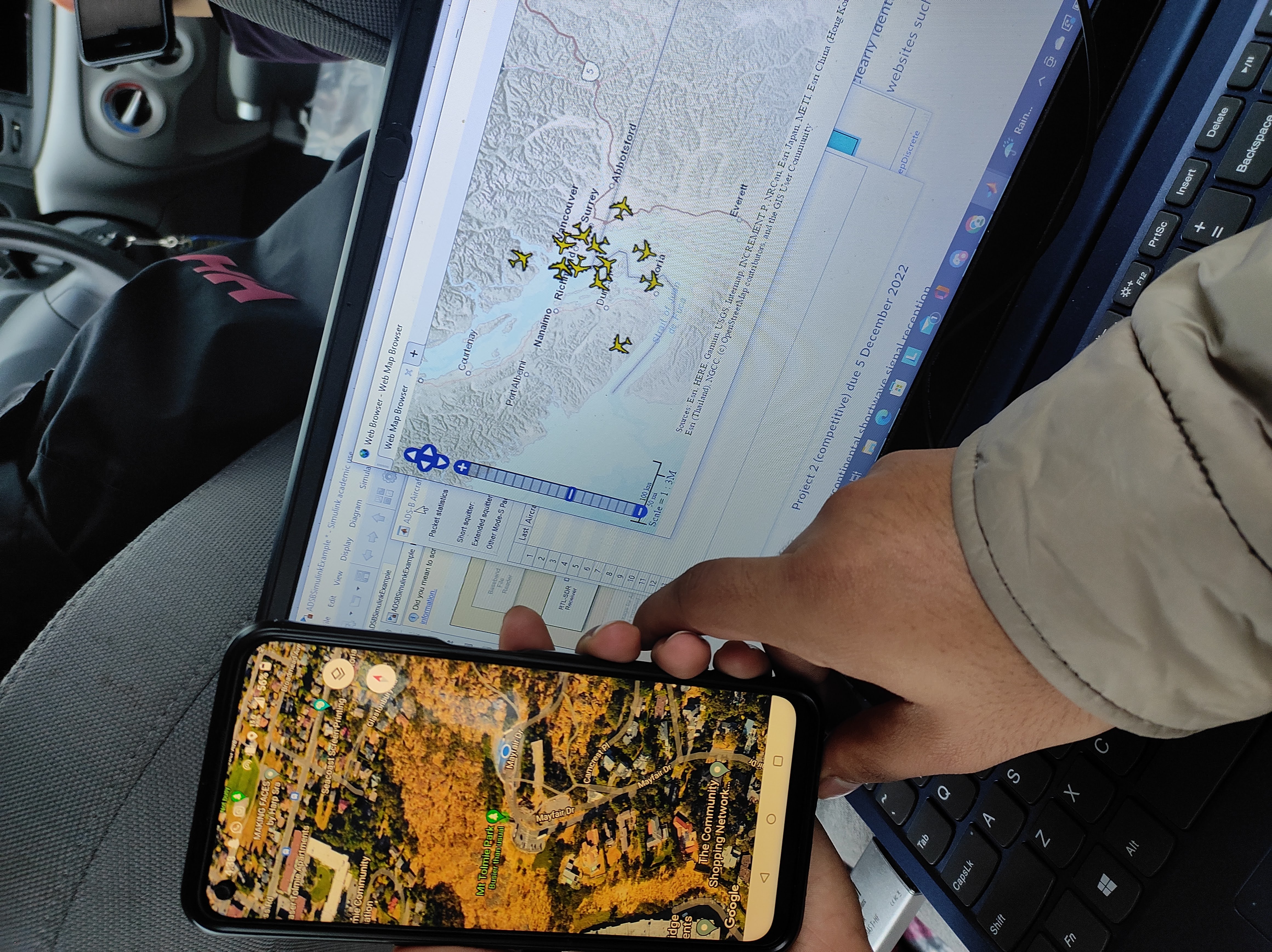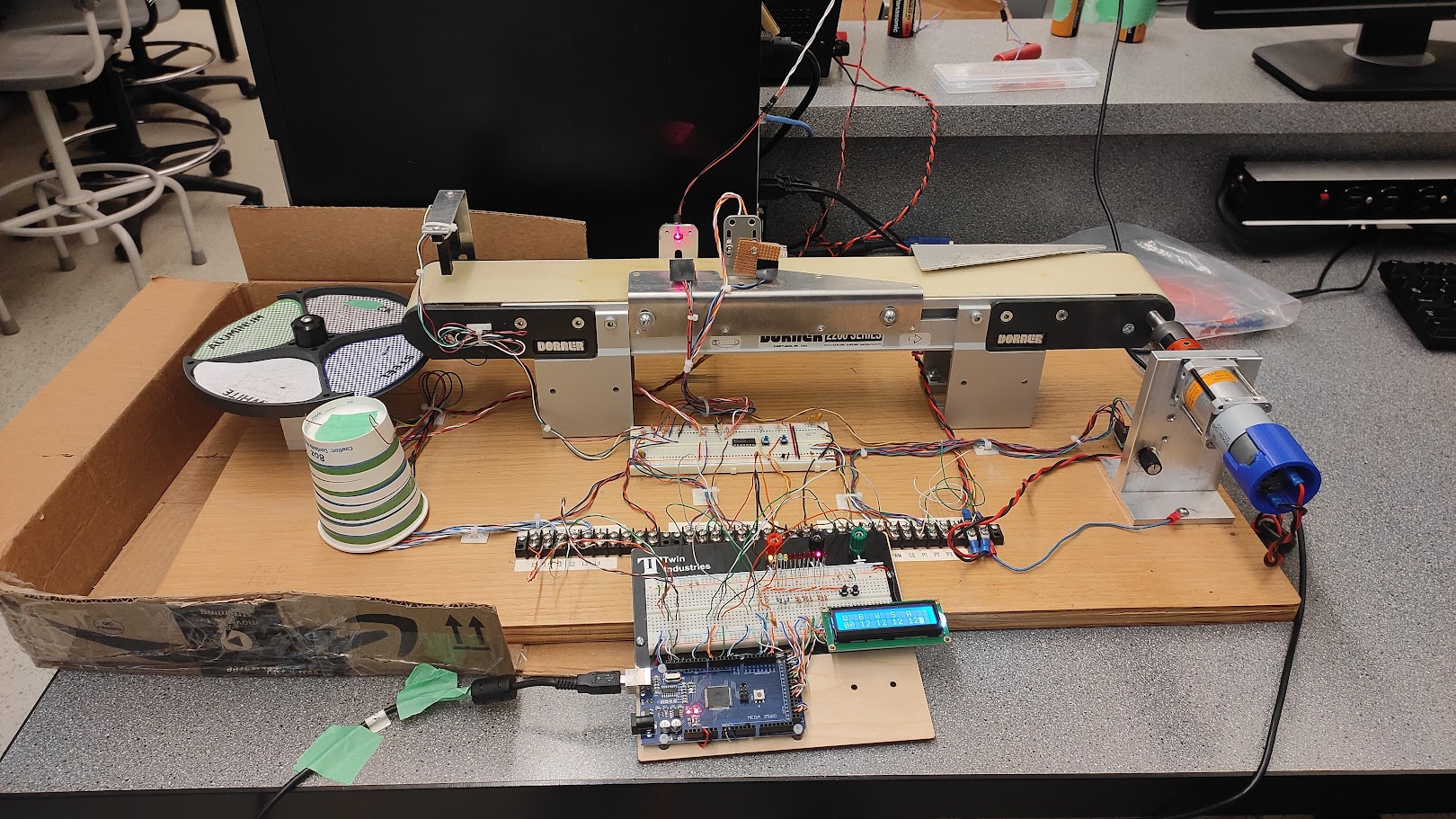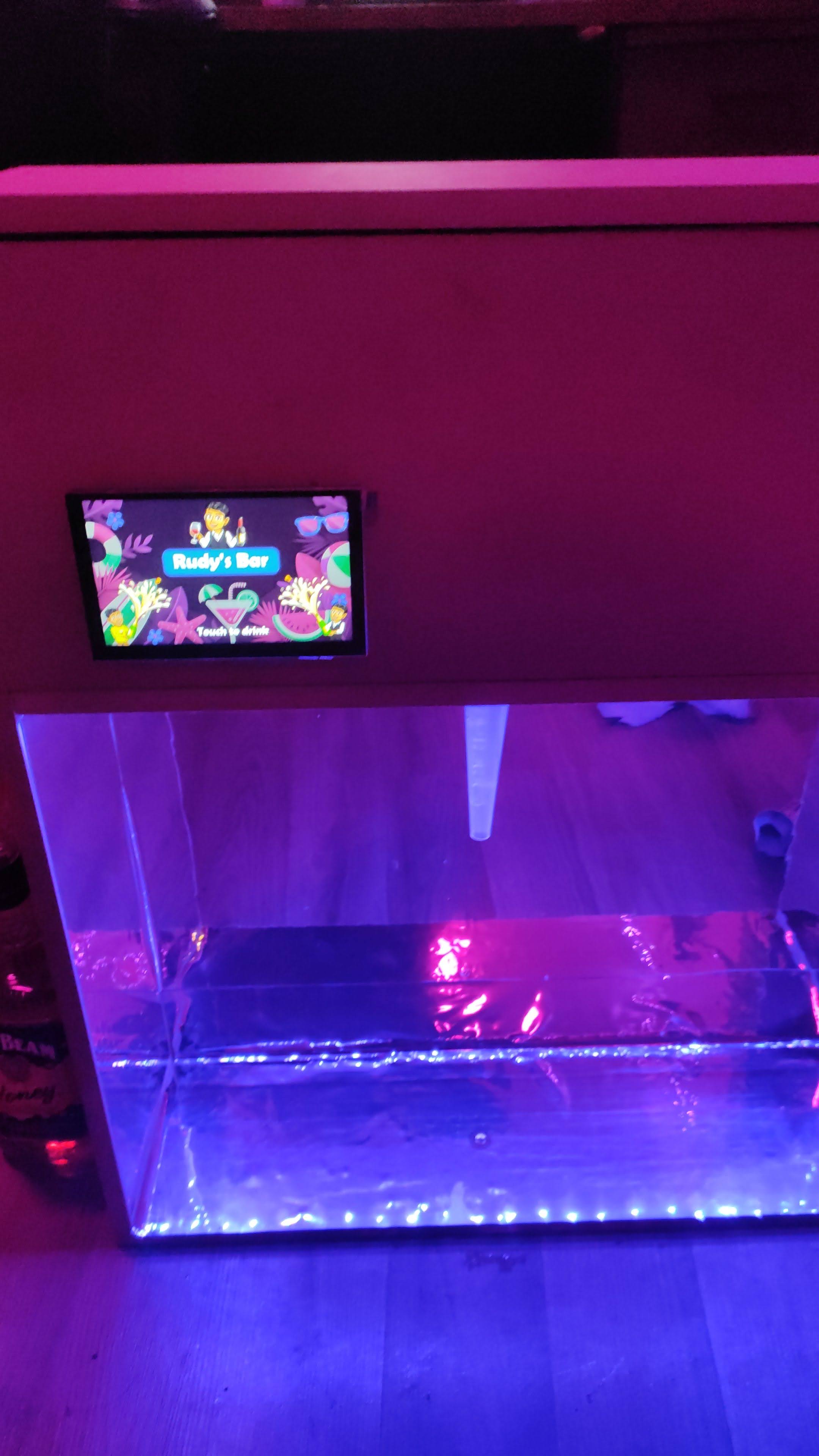Signal Processing and Wireless Communication
Signal Processing and Wireless Communication
Signal Processing and Wireless Communication



Overview
As part of the ECE 350 Communications Theory course, I undertook two significant projects focusing on real-world applications of signal processing and wireless communication. These projects involved setting up an RTL-SDR receiver to capture and analyze signals, including aircraft data and shortwave transmissions. Both projects were conducted at Mt. Tolmie in Victoria, BC, utilizing custom-built antennas and advanced signal processing techniques.
Project 1: Aircraft Signal Tracking
Objective: To capture and analyze aircraft signals using an RTL-SDR receiver and MATLAB.
System Components:
RTL-SDR Dongle: USB stick for receiving radio signals.
Antenna: Dipole antenna connected to the RTL-SDR.
Software: MATLAB for signal processing and analysis.
Receiver Location: Set up on Mt. Tolmie, Victoria, BC.
Development Process:
Equipment Setup: Connected the RTL-SDR dongle to a laptop and the dipole antenna. Elevated the antenna to maximize signal reception.
Data Capture: Used the RTL-SDR to capture signals from aircraft, which were then processed in MATLAB.
Data Verification: Cross-referenced captured data with FlightAware to verify the accuracy of the received coordinates.
Distance Calculation: Measured the distance between the receiver and the aircraft using captured coordinates.
Results:
Successfully tracked multiple aircraft, verifying data with real-time flight information from FlightAware.
Demonstrated the effectiveness of the RTL-SDR in capturing and processing aircraft signals.
Flight paths and data visualization in MATLAB.
Comparison of received data with FlightAware logs.
Project 2: Shortwave Signal Reception
Objective: To receive and analyze shortwave signals using an RTL-SDR receiver and a custom-built antenna.
System Components:
RTL-SDR Dongle: USB stick for receiving radio signals.
Antenna: Makeshift antenna using 25 ft copper wire attached to a dipole stand.
Software: WSJT-X for signal decoding.
Receiver Location: Set up on Mt. Tolmie, Victoria, BC.
Development Process:
Antenna Construction: Built an antenna by cutting a 25 ft copper wire in half and attaching it to a dipole stand to maximize reception.
Data Capture: Positioned the antenna on Mt. Tolmie to capture shortwave signals.
Signal Analysis: Used WSJT-X to decode signals and identify transmission sources.
Data Verification: Verified signals using PSK Reporter to identify transmission and reception locations.
Results:
Successfully received and decoded shortwave signals from distant locations, including Brazil and Chile.
Demonstrated the capability of the custom-built antenna in capturing long-distance signals.
Figures:
Maps showing signal paths and reception points.
Screenshots of decoded signals and verification from PSK Reporter.
Challenges and Solutions
Antenna Setup:
Challenge: Ensuring optimal antenna setup for maximum signal reception.
Solution: Experimented with different antenna configurations and locations to achieve the best reception.
Signal Interference:
Challenge: Dealing with signal interference and noise.
Solution: Used filtering and signal processing techniques in MATLAB and WSJT-X to enhance signal clarity.
Data Verification:
Challenge: Verifying the accuracy of received signals.
Solution: Cross-referenced with reliable sources like FlightAware and PSK Reporter.
Project Outcomes
Current Functionality:
Both projects successfully captured, processed, and verified real-world signals using RTL-SDR and custom-built antennas.
Demonstrated practical applications of communications theory in real-world scenarios.
Performance Metrics:
Accurate tracking of aircraft signals and successful reception of long-distance shortwave transmissions.
Effective use of MATLAB and WSJT-X for signal analysis and verification.
Limitations:
Environmental factors such as weather and location can affect signal reception quality.
Limited to the frequency range supported by the RTL-SDR dongle.
Future Improvements
Advanced Signal Processing: Implementing more sophisticated algorithms for noise reduction and signal enhancement.
Enhanced Antenna Design: Designing more advanced antennas for better reception and broader frequency coverage.
Automation: Developing automated scripts for data capture, processing, and verification to streamline the workflow.
Conclusion
The Wireless Communication projects provided hands-on experience with real-world applications of signal processing and wireless communication. By successfully capturing and analyzing signals from aircraft and shortwave transmissions, these projects demonstrated the practical relevance of communications theory and the capabilities of RTL-SDR technology.
Overview
As part of the ECE 350 Communications Theory course, I undertook two significant projects focusing on real-world applications of signal processing and wireless communication. These projects involved setting up an RTL-SDR receiver to capture and analyze signals, including aircraft data and shortwave transmissions. Both projects were conducted at Mt. Tolmie in Victoria, BC, utilizing custom-built antennas and advanced signal processing techniques.
Project 1: Aircraft Signal Tracking
Objective: To capture and analyze aircraft signals using an RTL-SDR receiver and MATLAB.
System Components:
RTL-SDR Dongle: USB stick for receiving radio signals.
Antenna: Dipole antenna connected to the RTL-SDR.
Software: MATLAB for signal processing and analysis.
Receiver Location: Set up on Mt. Tolmie, Victoria, BC.
Development Process:
Equipment Setup: Connected the RTL-SDR dongle to a laptop and the dipole antenna. Elevated the antenna to maximize signal reception.
Data Capture: Used the RTL-SDR to capture signals from aircraft, which were then processed in MATLAB.
Data Verification: Cross-referenced captured data with FlightAware to verify the accuracy of the received coordinates.
Distance Calculation: Measured the distance between the receiver and the aircraft using captured coordinates.
Results:
Successfully tracked multiple aircraft, verifying data with real-time flight information from FlightAware.
Demonstrated the effectiveness of the RTL-SDR in capturing and processing aircraft signals.
Flight paths and data visualization in MATLAB.
Comparison of received data with FlightAware logs.
Project 2: Shortwave Signal Reception
Objective: To receive and analyze shortwave signals using an RTL-SDR receiver and a custom-built antenna.
System Components:
RTL-SDR Dongle: USB stick for receiving radio signals.
Antenna: Makeshift antenna using 25 ft copper wire attached to a dipole stand.
Software: WSJT-X for signal decoding.
Receiver Location: Set up on Mt. Tolmie, Victoria, BC.
Development Process:
Antenna Construction: Built an antenna by cutting a 25 ft copper wire in half and attaching it to a dipole stand to maximize reception.
Data Capture: Positioned the antenna on Mt. Tolmie to capture shortwave signals.
Signal Analysis: Used WSJT-X to decode signals and identify transmission sources.
Data Verification: Verified signals using PSK Reporter to identify transmission and reception locations.
Results:
Successfully received and decoded shortwave signals from distant locations, including Brazil and Chile.
Demonstrated the capability of the custom-built antenna in capturing long-distance signals.
Figures:
Maps showing signal paths and reception points.
Screenshots of decoded signals and verification from PSK Reporter.
Challenges and Solutions
Antenna Setup:
Challenge: Ensuring optimal antenna setup for maximum signal reception.
Solution: Experimented with different antenna configurations and locations to achieve the best reception.
Signal Interference:
Challenge: Dealing with signal interference and noise.
Solution: Used filtering and signal processing techniques in MATLAB and WSJT-X to enhance signal clarity.
Data Verification:
Challenge: Verifying the accuracy of received signals.
Solution: Cross-referenced with reliable sources like FlightAware and PSK Reporter.
Project Outcomes
Current Functionality:
Both projects successfully captured, processed, and verified real-world signals using RTL-SDR and custom-built antennas.
Demonstrated practical applications of communications theory in real-world scenarios.
Performance Metrics:
Accurate tracking of aircraft signals and successful reception of long-distance shortwave transmissions.
Effective use of MATLAB and WSJT-X for signal analysis and verification.
Limitations:
Environmental factors such as weather and location can affect signal reception quality.
Limited to the frequency range supported by the RTL-SDR dongle.
Future Improvements
Advanced Signal Processing: Implementing more sophisticated algorithms for noise reduction and signal enhancement.
Enhanced Antenna Design: Designing more advanced antennas for better reception and broader frequency coverage.
Automation: Developing automated scripts for data capture, processing, and verification to streamline the workflow.
Conclusion
The Wireless Communication projects provided hands-on experience with real-world applications of signal processing and wireless communication. By successfully capturing and analyzing signals from aircraft and shortwave transmissions, these projects demonstrated the practical relevance of communications theory and the capabilities of RTL-SDR technology.
Overview
As part of the ECE 350 Communications Theory course, I undertook two significant projects focusing on real-world applications of signal processing and wireless communication. These projects involved setting up an RTL-SDR receiver to capture and analyze signals, including aircraft data and shortwave transmissions. Both projects were conducted at Mt. Tolmie in Victoria, BC, utilizing custom-built antennas and advanced signal processing techniques.
Project 1: Aircraft Signal Tracking
Objective: To capture and analyze aircraft signals using an RTL-SDR receiver and MATLAB.
System Components:
RTL-SDR Dongle: USB stick for receiving radio signals.
Antenna: Dipole antenna connected to the RTL-SDR.
Software: MATLAB for signal processing and analysis.
Receiver Location: Set up on Mt. Tolmie, Victoria, BC.
Development Process:
Equipment Setup: Connected the RTL-SDR dongle to a laptop and the dipole antenna. Elevated the antenna to maximize signal reception.
Data Capture: Used the RTL-SDR to capture signals from aircraft, which were then processed in MATLAB.
Data Verification: Cross-referenced captured data with FlightAware to verify the accuracy of the received coordinates.
Distance Calculation: Measured the distance between the receiver and the aircraft using captured coordinates.
Results:
Successfully tracked multiple aircraft, verifying data with real-time flight information from FlightAware.
Demonstrated the effectiveness of the RTL-SDR in capturing and processing aircraft signals.
Flight paths and data visualization in MATLAB.
Comparison of received data with FlightAware logs.
Project 2: Shortwave Signal Reception
Objective: To receive and analyze shortwave signals using an RTL-SDR receiver and a custom-built antenna.
System Components:
RTL-SDR Dongle: USB stick for receiving radio signals.
Antenna: Makeshift antenna using 25 ft copper wire attached to a dipole stand.
Software: WSJT-X for signal decoding.
Receiver Location: Set up on Mt. Tolmie, Victoria, BC.
Development Process:
Antenna Construction: Built an antenna by cutting a 25 ft copper wire in half and attaching it to a dipole stand to maximize reception.
Data Capture: Positioned the antenna on Mt. Tolmie to capture shortwave signals.
Signal Analysis: Used WSJT-X to decode signals and identify transmission sources.
Data Verification: Verified signals using PSK Reporter to identify transmission and reception locations.
Results:
Successfully received and decoded shortwave signals from distant locations, including Brazil and Chile.
Demonstrated the capability of the custom-built antenna in capturing long-distance signals.
Figures:
Maps showing signal paths and reception points.
Screenshots of decoded signals and verification from PSK Reporter.
Challenges and Solutions
Antenna Setup:
Challenge: Ensuring optimal antenna setup for maximum signal reception.
Solution: Experimented with different antenna configurations and locations to achieve the best reception.
Signal Interference:
Challenge: Dealing with signal interference and noise.
Solution: Used filtering and signal processing techniques in MATLAB and WSJT-X to enhance signal clarity.
Data Verification:
Challenge: Verifying the accuracy of received signals.
Solution: Cross-referenced with reliable sources like FlightAware and PSK Reporter.
Project Outcomes
Current Functionality:
Both projects successfully captured, processed, and verified real-world signals using RTL-SDR and custom-built antennas.
Demonstrated practical applications of communications theory in real-world scenarios.
Performance Metrics:
Accurate tracking of aircraft signals and successful reception of long-distance shortwave transmissions.
Effective use of MATLAB and WSJT-X for signal analysis and verification.
Limitations:
Environmental factors such as weather and location can affect signal reception quality.
Limited to the frequency range supported by the RTL-SDR dongle.
Future Improvements
Advanced Signal Processing: Implementing more sophisticated algorithms for noise reduction and signal enhancement.
Enhanced Antenna Design: Designing more advanced antennas for better reception and broader frequency coverage.
Automation: Developing automated scripts for data capture, processing, and verification to streamline the workflow.
Conclusion
The Wireless Communication projects provided hands-on experience with real-world applications of signal processing and wireless communication. By successfully capturing and analyzing signals from aircraft and shortwave transmissions, these projects demonstrated the practical relevance of communications theory and the capabilities of RTL-SDR technology.

